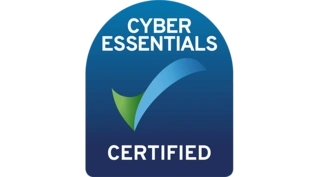When submitting an application for a job vacancy, a cover
letter will often accompany your CV with the purpose of introducing yourself to
a potential employer. Not every employer will require a cover letter, but
unless you are instructed otherwise, you should include a cover letter to
provide more information upon your previous experience and future goals for new
employment.
Despite only being around three to five paragraphs long,
cover letters can be difficult to master, but Blueprint Recruitment Solutions
have created a step-by-step guide to support you in perfecting yours.
Step 1: Research
Before writing your cover letter, you should re-read the
job description for the relevant job, highlighting the employer’s key
requirements (just as you would whilst writing your CV).
We also recommend that you research the whole
company in more detail by checking out their website and social media pages.
Collate information that will allow you to tailor your cover letter to align
with the company’s ethos, showing that you have taken the time to go one step
beyond other applicants by exploring their work more broadly. You should seek
out key details about:
·
The culture and values of the
company
·
The company’s vision/goal over
the next few years
·
The industry that the company
operates in, potentially considering key Clientele.
This information will prove extremely
helpful when it is time to write the content of your cover letter…
The General Structure:
·
Heading
·
Term of address
·
Paragraph one: Introduction
·
Paragraph two: Experience and
qualifications
·
Paragraph three: Your interest
in the company and the contributions you can offer
·
Paragraph four: Restate your
interest and thank the reader for their time
·
Sign off
The Details:
Heading: Like an ordinary letter, a cover letter should feature your
address in the top right corner and the company address underneath, aligned to
the left of the page. Furthermore, underneath the company address, you should
include the date.
Term of address: If possible, you should attempt to find a named contact to
address at the opening of your letter. The name of the hiring manager might be
featured on the initial job advert, but you might also be able to find them
through the employees listed on their LinkedIn company page. If this
information is unavailable, you can still use a more general term of address,
such as Dear Sir/Madam or Dear Hiring Manager, as your final resort.
Paragraph one: To open the first paragraph, you should provide background information
about your reason for writing the letter. State the role you are applying for,
where you saw the job advert, and provide a brief summary about your current
job title/situation.
Paragraph two: Use this paragraph to discuss your relevant experience and
potential contributions to the company you are applying to. This section of
your cover letter is your opportunity to highlight your key strengths. Remember
that your cover letter should not simply repeat the content of your CV, but can
expand upon information in instances where this will add value to your
application. Refer to particular scenarios where you displayed the relevant
skills, and try to use statistics to support these examples.
Paragraph three: Explain why you believe you’re suitable for the job and
summarise the skills you would be able to contribute if you start in the role.
You should link your contributions to the mission of the business, and also
explain why you’re interested in working for that particular company.
Paragraph four: This is the concluding paragraph to your cover letter. Keep
this paragraph short, simply restating your interest in the job and the
company. You might also want to briefly mention that you are keen to come in
for an interview and you are happy to answer any further questions they may
have.
Sign off: Your sign off will depend on how you initially addressed the
reader; if you referenced a specific person/name use ‘Yours sincerely’, but if
you used a more general term of address, use ‘Yours faithfully’.
Format:
Ensure that your cover letter is written in
the same style/size font as your CV (we recommend either Arial, Calibri, or
Times New Roman and a minimum of size 11 font). If you are sending your cover
letter via email, include it in the body of the message so that it doesn’t get
moved to a junk or spam folder once sent. Otherwise, convert your cover letter to
a PDF format, unless you have been told to submit the document differently.
